Amplifying Quality Instruments
by Peter Henriksen and Gerry Humphrey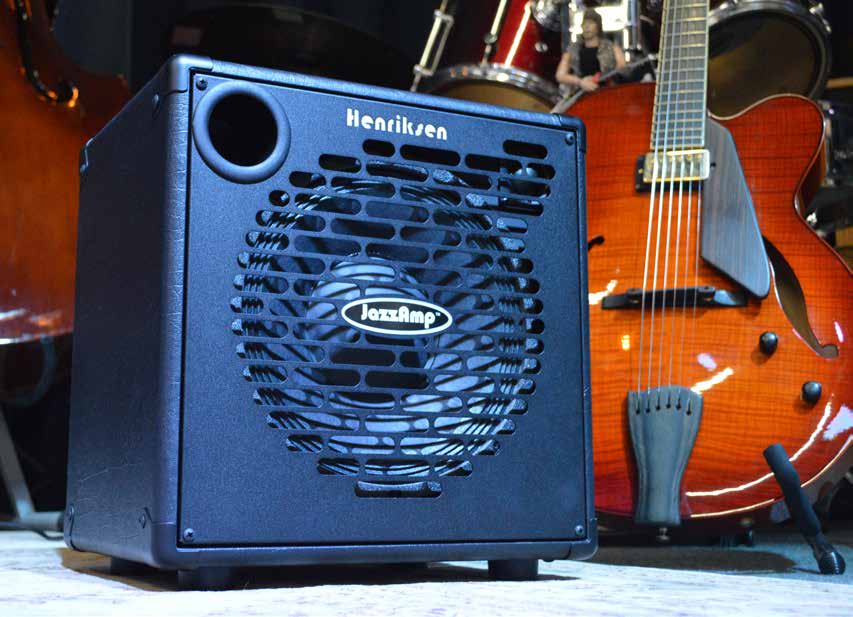
You only need an amp for performing, so other people can hear you playing, right?
Well, it’s certainly important in that regard, but amps are also popular with lone guitarists as they improve their skills and continue their quest for the ultimate tone. Playing a wonderful guitar through a high-quality amplifier is a great way to develop finesse and touch with your fingering style as you don’t need to lean into the instrument itself too hard. What sounds better than a sweet guitar? That same guitar, only louder, played through a really nice amp.
No matter what kind of guitar you’re playing, and no matter what style, as soon as you plug a guitar into an amplifier, you’re technically an “electric guitar player”. This is particularly problematic with higher-end guitars, because you can plug a $500 budget guitar into a great amplifier and make it sound great, but as soon as you plug an upper end instrument into a cheap amplifier, any nuanced qualities so painstakingly built into that guitar are completely lost. The key to building a great amplifier is to take into account that the greatest attributes of a quality instrument are subtle but are the most important and necessary, and the highest compliment is to have someone say that the amp “sounds like my guitar, only louder”. 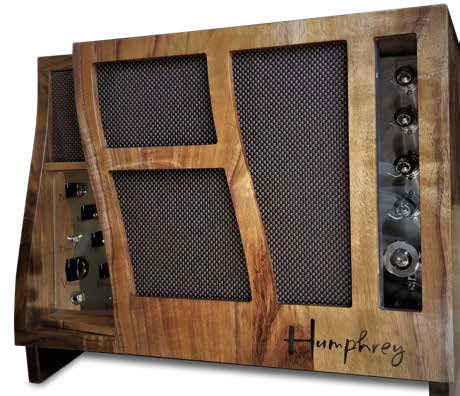
Luthiers can spend years working on a single instrument; they spend a lifetime mastering their craft and, like all great artists, pour their heart, soul and every fiber of their being into their work. Installing a pickup on an otherwise acoustic instrument with the intent of amplifying that signal through a variety of technologies manufactured by different companies in an attempt to replicate the acoustic sound of the instrument becomes a daunting proposition for the amplifier designer, player and the luthier alike. No one wants the sound of the instrument mis-represented. Building an amplifier to faithfully replicate the sound of a great variety of instruments is no simple task, and there are as many approaches as there are companies out there doing it, but they all share some basic principles and understanding these can help musicians choose which type of amplifier works best for their instruments.
The first element in the signal chain is a pickup, microphone, or combination thereof. The difficulty with amplifiers is that you need to accommodate not only different takes on a pickup design, but completely different types of pickups. There are so many different choices for generating a signal, but they basically boil down to three different common types: Electromagnetic pickups, piezo-electric pickups, and microphones. Most guitars use only one of these types, but in acoustic guitars a blended system of piezo-electric and microphones are not uncommon and adding a piezo-electric pickup to a guitar with an electromagnetic pickup has become a design choice to get a different type of response (the character of which depends on who you ask and how it’s implemented). In lay terms, an electromagnetic pickup translates the vibration of the string into a signal, whereas a piezo-electric pickup translates the vibration of the guitar’s top, and a microphone utilizes sound pressure from the instrument itself to create signal.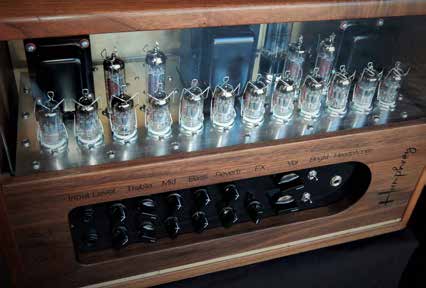
Most archtop and solid-body electric guitars have the familiar electromagnetic type of pickups. These come in many different variations themselves, but are for the most part fairly standard outputs and impedances which have been used for a long time, so while these pickups can vary greatly in design and tone, amplifying the signal isn’t quite as tricky as with piezo-electric pickups or microphones. From the luthier’s perspective, however, these can be the least desirable choice because most types require drilling holes into the top of the guitar which changes the acoustic nature of the guitar itself. Consequently, many opt for a “floating” electromagnetic pickup, typically attached to the neck so that the top of the guitar is unmolested. This is best for the acoustic nature of the guitar, but for the most part floating pickups are more difficult to amplify because they aren’t anchored as well to the instrument and tend to output less fidelity and lower signal levels. Building an input gain control into an amplifier, or two separate inputs to accommodate lower output pickups can help alleviate this issue.
Traditionally piezo-electric pickups have been the flattop acoustic guitar pickup of choice as they translate the vibration of the instrument into signal and so, properly designed, tend to be a much truer representation of the actual sound coming from the guitar. In the past these types of pickups were always best with a preamp before sending the signal to an amplifier; however Piezo-electric designs have come a very long way in recent years, and most no longer require an outboard preamp to work well with a guitar amplifier. As with electromagnetic pickups, designing an amplifier knowing that there will be a variable amount of input signal coming in is key.
Microphones are perhaps the most difficult input device to handle from an amplifier perspective because microphones are most prone to feedback, may require phantom power and generally output a low impedance balanced signal which traditional guitar amplifiers are not equipped to deal with. Most solid-state amplifiers with either an acoustic- focused design or multi-purpose, multi-channel design are going to have a special mic input and phantom power. Otherwise, it’s best to use a special mic preamp or, in cases where a combination of a pickup and a microphone are being used, a blending device will condition the signal. Many pickup/mic systems have this blend control built into the guitar, or are sold with the device.
Once the signal is generated, it is now off to the amplifier. There are three basic components to an amplifier: the preamp, the power amp and the speaker. The preamp is where most of the character of an instrument amplifier is developed. The primary job of the preamp is to take the signal sent from the instrument and bring it up to the appropriate level for the power amp to do its job. It is in this stage where the tone controls are used along with the preamp gain to condition the instrument’s signal. It is also at this stage where a lot of unwelcome sounds and distortions can be introduced. Often acoustic instruments, because they use piezo-electric pickups, require or work better with an additional preamp because they don’t output enough signal that a traditional guitar amp can accommodate. Modern amplifiers and piezo electric pickups are high enough quality that an additional outboard preamp isn’t really necessary, but there are a lot of very high-quality devices designed to improve, enhance or just clean up the signal on its way to the amplifier.
Most preamps have some type of tone controls. Musicians are universally familiar with a basic tone control, where you turn up or down the bass and/or treble of an instrument. These passive shunting circuits are standard in almost any kind of audio amplification because they are the most intuitive way to change a signal to suit personal preference. Beyond that, there are also active controls and equalization to further fine tune the signal. One reason it’s important to have an amplifier designed specifically with an acoustic guitar in mind, is that general market amplifiers are designed with a “scoop” built into their preamp, meaning the midrange frequencies are artificially turned down because when playing rock on an electric guitar those frequencies can become “muddy” and unpleasant. With acoustic guitars, or archtops and jazz music, you need those frequencies because you want a much more piano-like response.
The preamp is really where there can be a real “art” to audio design. Different components can make a difference in whether something is dark or bright, even if they have the same specification. Just like choosing a type of wood, choosing a brand and type of capacitor can change the sound; for example going from a less expensive type of capacitor to a polypropelene capacitor will add brilliance to a sound, but the finer elements can even change greatly depending on the manufacturer and the individual components tolerances. Even something as simple as a different batch can make a difference in the sound and although subtle, not necessarily insignificant. This is typically where math and engineering take a backseat to using one’s ears to make design decisions.
The next stage in amplification is the power amp. Power amplifier designs are a little more straight forward and have traditionally been broken into classes (A, A/B, etc…) but in the simplest terms, these days there are three basic types of power amplifiers on the market: Tube amps, traditional transistor solid-state amps, and class D (switching) amplifiers.
Tube amplifiers are the oldest of the technologies, and their design is an art unto itself — every little thing matters including where wires are placed when connecting components together. Solid state power amplifier architecture uses a transistor as opposed to a vacuum tube, reducing weight, size, cost and maintenance, but requiring more complex circuits. Most recently, class D amplifiers have become more available and are the predominant amplifier on the market for acoustic instruments as they put out the most efficient power. In the beginning, class D amplifiers had both quality and fidelity issues as well as noise problems when applied to instrument amplifiers (as opposed to consumer audio applications), but those problems are largely a thing of the past.
When designing an amplifier for acoustic instruments, or any instrument where you do not want the signal to contain any distortion, you want as much power as is practical. The more power you have, the more volume and dynamic control you can get from the instrument without mud or distortion; however that brings with it size and weight. Class D amps are the most economical way to do this, but can be missing the analog warmth you get from a tube amp design. As with the preamp, this is where designs need the attention of the designer’s ears as much as anything.
If weight is not so much of a concern, then a well-designed tube amp can deliver a few things that aren’t possible with even the most sophisticated digital circuitry. One of the unique characteristics of vacuum tube technology is that tubes can produce harmonics naturally. Why might this be important, and doesn’t this constitute some type of distortion of the input signal? A purist would say yes – it’s harmonic distortion, but when you take into consideration the loss of the “total” sound and nuances that a single-point pickup system doesn’t deliver to the amp, then it’s a reasonable trade-off.
When playing your favorite acoustic guitar, you’re hearing all kinds of sounds coming not just from the sound hole, but from the sides, the back, the neck and the strings themselves. A lot of the complexity of that sound is lost when you use a single-point, or even a dual, pickup system that samples the sound from a very narrow space on the guitar. Vacuum tubes help by reintroducing some of the harmonics that are lost, giving a very natural sound that has a certain sparkle to it.
Designing a tube amp from the ground up, specifically for an acoustic instrument, is a much different animal than a traditional tube amp for an electric guitar. Maximum headroom at every point in the signal chain is key, as is using very high quality components, thoughtful cabinet design and the best speaker/tweeter combination available.
Choosing the right speakers for an amp is an area where there truly are no wrong answers. Some are just better than others, and sometimes it can be fairly subjective . Speakers can be cheap, expensive, bright, dark, fast or slow in response, and as long as they are within the specs of the amplifier and cabinet design, it’s all a matter of taste. Typically for acoustic and archtop guitars, the idea is to use a speaker that has a full range and flat response so as not to introduce too much of the speaker’s own character into the sound. Often times speakers used in these amps weren’t originally intended for guitar amplifiers, but rather PA systems.
For an acoustic guitar, it’s best to use a hi-fi quality speaker, overrated in terms of power so there’s no possibility of breakup, and match it with a high-power tweeter to fill out those high frequencies.
Like our luthier brethren, whose hard earned skills and carefully chosen materials set them apart from mass-market manufacturers, there are very few amplifier builders that recognize the need for an amp to rise to the quality of sound produced by a custom hand-built guitar. Playing acoustic doesn’t mean playing unplugged. If you love the sound of your guitar, you’ll love it even more with the right amplifier. playing unplugged. If you love the sound of your guitar, you’ll love it even more with the right amplifier.
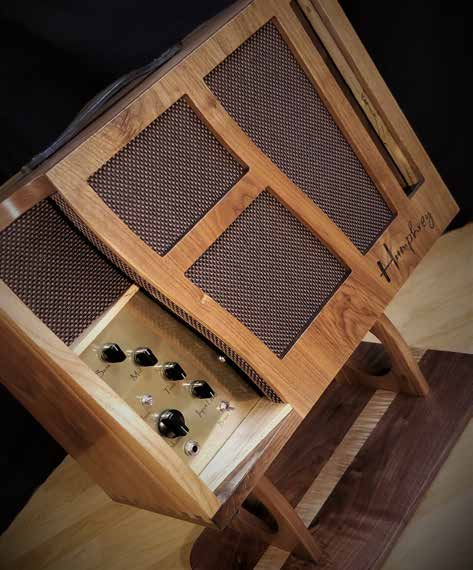
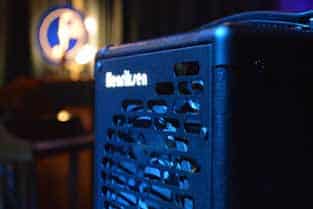
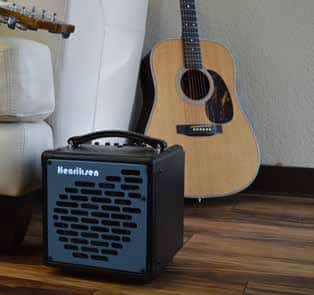
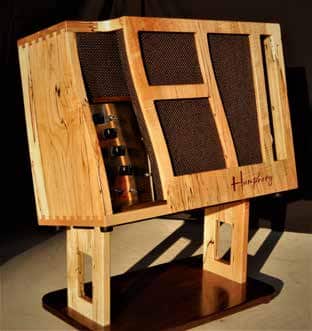
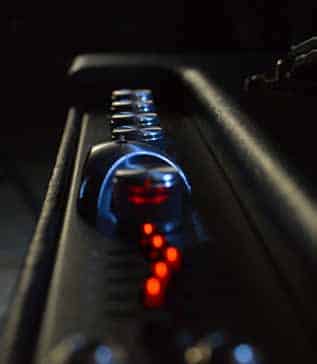

Very informative article, gives me an idea of what to expect in picking out a speaker to add to my amp head.
fantastic article, thanks very much for the information…. you really know what you’re talking about ☆☆☆☆☆
Thanks for the great article. I like the Bud very much. This article was very informative I play arch top, acoustic and solid body guitars. Thanks for the great articles and for building a great amp